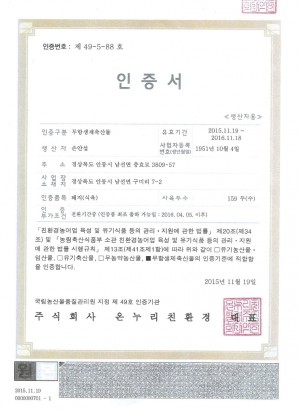[앞다리살]Five Incredible Mobile Car Door Lock Repair Examples
18,172
2022.10.06 16:28
짧은주소
본문
Car Power Door Lock Repair Near Me
Are you experiencing issues with your car's door locks? If you have a keyless entry system but aren't able to lock your doors, it could be due to an issue with your keyless entry computer or key fob programming. If your key fob is not sending signals, you'll must take it to a service center for repair. Other problems can be blown fuses, or the solenoid for a door lock.
Symptoms of a bad door lock actuator
The bad car power door lock actuators can cause the door locks of your car not to function. The actuator is responsible for controlling the door switches and remote key fobs, wiring and control module. It can also fail due to of corrosion, damage or blown fuses. There are easy steps you can take to pinpoint the problem.
A sudden and unexpected sound is one of the first indications that your door lock actuator needs to be replaced. Most power door locks work with motors and gears, so if you hear unusual sounds when you open or close the door, that's a sign that your actuator has broken. The more pronounced the sound the more likely it is that the door lock actuator is in need of repair.
If the handle isn't working, you can insert a coat hanger in the small hole of the actuator. This hole is in the panel next to the actuator and you can get to it by activating the ignition. Once you have inserted the coat hanger into the panel, move the handle upwards using the help of a small screwdriver or pocket knife.
There could be a myriad of reasons why the door locks do not work. The actuator may be damaged or the cable that connects it to the actuator assembly may be damaged. You may need to replace the entire actuator assembly if the cable is damaged. If the actuator isn't operating, the door may not lock at all.
Identifying the symptom of a bad car power door lock actuator is the first procedure to fix this part. While a defective door lock actuator isn't hazardous, it can be an inconvenience to drive without the feature of a power door lock. The actuator is a vital part of a car's power door lock system. It is important to immediately visit an automotive service center in the event that you discover problems with the door lock actuator.
Cost to replace an actuator for a door lock
The actuator for the power door lock is a mechanical part inside your car that moves each time you lock or unlock the doors. It is prone to wear out over time or become malfunctioning. It is possible to replace it while your car is still under warranty or after the mileage of a certain amount. This repair should take approximately an hour.
Failure of the door lock's actuator could be caused by a variety reasons such as corrosion. Dust, moisture, oil, and other debris can enter the mechanism and eventually corrode the mechanical links. This results in the door lock actuator breaking and needing to be repaired. It's easy to determine whether you need to replace the door actuator for the lock.
A mechanic will replace the door lock actuator when it's beyond repair. It's a simple task for a technician, but the labor and parts for an auto power door lock actuator repair can run upwards of $120. You'll need to find an alternative since OEM parts aren't always readily available.
The first indication that the door lock actuator has failed is when it stops working. This is a warning sign. While the electric system in the car is functional it's crucial to replace the actuator. Sometimes, the actuator might be damaged by a damaged key fob battery. It is also possible that you'll have to replace the entire door lock actuator, so it's recommended to research.
A car's actuator for door locks that is powered by electricity costs between $30 and $200, but it won't impact your safety or performance. If the actuator stops working and you are unable to use it, you must manually lock and unlock your car until it is fixed. The cost of replacing the actuator is dependent on its condition and the make.
Testing a door lock actuator
If your door locks aren't locking or unlocking, it could be due to problems with the door lock actuator. Door locks that don’t work properly are often caused by this device. You may need to replace the door lock actuator if it isn't functioning correctly.
The actuator has a variety of parts that are connected to the door Car Power door lock repair near me lock and are responsible for locking or unlocking the door. Sometimes there are instances when one or two of these parts may be disconnected which causes the door lock to malfunction. This can lead to unusual noises and grinding. If you spot one of these signs, you should be sure to have it checked.
If the door lock actuator won't work, you should visit a mechanic for a repair. The repair is usually simple and won't take too long. It is important to be aware that parts may need to be ordered by your mechanic, which could take several days.
The power door lock actuator, which is the most common part of a security lock, must be checked immediately if the door locks won't open. It could be an issue with the actuator. The actuator is located in the door's frame and is powered by an electrical plug. You'll need to remove it off the door panel in order to test the actuator. The actuator is located inside the door frame close to the latch.
You need to be able to identify the issue in order to test the door lock actuator. It could be an electrical or mechanical problem. A blown fuse or a dead battery can cause the issue. A simple repair to the door actuator will often resolve the issue and save you money.
Cleaning a jammed door lock
First, remove any debris from the keyway if you have a jammed lock on your door. You can also apply lubricant on the keyway. This will help remove any dust or dirt that's stuck in the lock's keyway, and it will help the lock move in a more fluid manner. If this fails, you might have to contact an expert locksmith.
Deadbolt locks are notoriously difficult to clean as they tend to hold dirt and dust inside. The dirt eventually causes the lock to jam. WD-40 can be applied to the lock's elements to prevent this from occurring. Apply it to both the inside and exterior parts.
Another method is to cook oil to clean the main part. The oil will help break up the gunky residue. But, you need to be careful when touching the lock's key to avoid leaving finger oils behind. After you have cleaned the key, you can attach the lock once more. If the issue is persisting you can apply WD-40 or other similar oil to the keyhole or parts of the lock.
You may also want to clean the latches on the lock as you are cleaning the keyway. Frequent slamming can lead to structural damage, and repeated hits can cause metal connecting rods, lock parts, and even the door latch to become warped. These parts may need to be replaced or inspected by an experienced mechanic. The latch components can become frozen due to moisture inside the lock. Using a hairdryer or WD-40 spray will help to melt them.
Compressed air is another useful tool for cleaning locks. You can find compressed air canisters that have small nozzles for car central lock repair near me keyholes. The nozzle is inserted into the keyhole and then use short blasts of air to blast out dirt and grime.
Use lubricant to unlock the door that is locked
It is possible that you have difficulty opening your car door if it is stuck. If that happens it is possible to try applying lubricant on the door's latch mechanism. This should help free up the stuck part. You'll need to apply it multiple times before wiping away any excess. Since oil-based lubricants trap dust and dirt, it is important to dry the oil.
Silicone is a good fluid to use on doors of cars. Make sure the spray straw is included in the lubricant so it can reach the locking mechanism's most deep parts. Silicone is impermeable to water, and it adheres to the door's surface for a longer time.
Petroleum jelly is another effective oil lubricant. Petroleum jelly is an excellent oil for many locks and latches. It could take longer than WD-40 but the result is a smooth, non-slip surface. You may have to repeat this procedure several times in the event that the lock is frozen. Don't speed up the process. It may take a while for the lubricant's melting to melt the ice, so be patient.
If the lock is frozen completely then you'll have to apply de-icer to the lock to break it. However, de-icer could damage the rubber seal, so you should avoid it. Try warming your car up using the remote starter to thaw the lock. Most instances, it takes around ten minutes to warm up. Alternatively, you can use a lighter or match to heat the key. If the lock is made from metal, you might need to use lubricant.
Graphite powder can be applied to the key if none of the methods above fail. This can loosen the lock's tumblers, and allow it to slide the key in. If the lubricant isn't working it is recommended to seek out the assistance of a locksmith to repair the problem.
Are you experiencing issues with your car's door locks? If you have a keyless entry system but aren't able to lock your doors, it could be due to an issue with your keyless entry computer or key fob programming. If your key fob is not sending signals, you'll must take it to a service center for repair. Other problems can be blown fuses, or the solenoid for a door lock.
Symptoms of a bad door lock actuator
The bad car power door lock actuators can cause the door locks of your car not to function. The actuator is responsible for controlling the door switches and remote key fobs, wiring and control module. It can also fail due to of corrosion, damage or blown fuses. There are easy steps you can take to pinpoint the problem.
A sudden and unexpected sound is one of the first indications that your door lock actuator needs to be replaced. Most power door locks work with motors and gears, so if you hear unusual sounds when you open or close the door, that's a sign that your actuator has broken. The more pronounced the sound the more likely it is that the door lock actuator is in need of repair.
If the handle isn't working, you can insert a coat hanger in the small hole of the actuator. This hole is in the panel next to the actuator and you can get to it by activating the ignition. Once you have inserted the coat hanger into the panel, move the handle upwards using the help of a small screwdriver or pocket knife.
There could be a myriad of reasons why the door locks do not work. The actuator may be damaged or the cable that connects it to the actuator assembly may be damaged. You may need to replace the entire actuator assembly if the cable is damaged. If the actuator isn't operating, the door may not lock at all.
Identifying the symptom of a bad car power door lock actuator is the first procedure to fix this part. While a defective door lock actuator isn't hazardous, it can be an inconvenience to drive without the feature of a power door lock. The actuator is a vital part of a car's power door lock system. It is important to immediately visit an automotive service center in the event that you discover problems with the door lock actuator.
Cost to replace an actuator for a door lock
The actuator for the power door lock is a mechanical part inside your car that moves each time you lock or unlock the doors. It is prone to wear out over time or become malfunctioning. It is possible to replace it while your car is still under warranty or after the mileage of a certain amount. This repair should take approximately an hour.
Failure of the door lock's actuator could be caused by a variety reasons such as corrosion. Dust, moisture, oil, and other debris can enter the mechanism and eventually corrode the mechanical links. This results in the door lock actuator breaking and needing to be repaired. It's easy to determine whether you need to replace the door actuator for the lock.
A mechanic will replace the door lock actuator when it's beyond repair. It's a simple task for a technician, but the labor and parts for an auto power door lock actuator repair can run upwards of $120. You'll need to find an alternative since OEM parts aren't always readily available.
The first indication that the door lock actuator has failed is when it stops working. This is a warning sign. While the electric system in the car is functional it's crucial to replace the actuator. Sometimes, the actuator might be damaged by a damaged key fob battery. It is also possible that you'll have to replace the entire door lock actuator, so it's recommended to research.
A car's actuator for door locks that is powered by electricity costs between $30 and $200, but it won't impact your safety or performance. If the actuator stops working and you are unable to use it, you must manually lock and unlock your car until it is fixed. The cost of replacing the actuator is dependent on its condition and the make.
Testing a door lock actuator
If your door locks aren't locking or unlocking, it could be due to problems with the door lock actuator. Door locks that don’t work properly are often caused by this device. You may need to replace the door lock actuator if it isn't functioning correctly.
The actuator has a variety of parts that are connected to the door Car Power door lock repair near me lock and are responsible for locking or unlocking the door. Sometimes there are instances when one or two of these parts may be disconnected which causes the door lock to malfunction. This can lead to unusual noises and grinding. If you spot one of these signs, you should be sure to have it checked.
If the door lock actuator won't work, you should visit a mechanic for a repair. The repair is usually simple and won't take too long. It is important to be aware that parts may need to be ordered by your mechanic, which could take several days.
The power door lock actuator, which is the most common part of a security lock, must be checked immediately if the door locks won't open. It could be an issue with the actuator. The actuator is located in the door's frame and is powered by an electrical plug. You'll need to remove it off the door panel in order to test the actuator. The actuator is located inside the door frame close to the latch.
You need to be able to identify the issue in order to test the door lock actuator. It could be an electrical or mechanical problem. A blown fuse or a dead battery can cause the issue. A simple repair to the door actuator will often resolve the issue and save you money.
Cleaning a jammed door lock
First, remove any debris from the keyway if you have a jammed lock on your door. You can also apply lubricant on the keyway. This will help remove any dust or dirt that's stuck in the lock's keyway, and it will help the lock move in a more fluid manner. If this fails, you might have to contact an expert locksmith.
Deadbolt locks are notoriously difficult to clean as they tend to hold dirt and dust inside. The dirt eventually causes the lock to jam. WD-40 can be applied to the lock's elements to prevent this from occurring. Apply it to both the inside and exterior parts.
Another method is to cook oil to clean the main part. The oil will help break up the gunky residue. But, you need to be careful when touching the lock's key to avoid leaving finger oils behind. After you have cleaned the key, you can attach the lock once more. If the issue is persisting you can apply WD-40 or other similar oil to the keyhole or parts of the lock.
You may also want to clean the latches on the lock as you are cleaning the keyway. Frequent slamming can lead to structural damage, and repeated hits can cause metal connecting rods, lock parts, and even the door latch to become warped. These parts may need to be replaced or inspected by an experienced mechanic. The latch components can become frozen due to moisture inside the lock. Using a hairdryer or WD-40 spray will help to melt them.
Compressed air is another useful tool for cleaning locks. You can find compressed air canisters that have small nozzles for car central lock repair near me keyholes. The nozzle is inserted into the keyhole and then use short blasts of air to blast out dirt and grime.
Use lubricant to unlock the door that is locked
It is possible that you have difficulty opening your car door if it is stuck. If that happens it is possible to try applying lubricant on the door's latch mechanism. This should help free up the stuck part. You'll need to apply it multiple times before wiping away any excess. Since oil-based lubricants trap dust and dirt, it is important to dry the oil.
Silicone is a good fluid to use on doors of cars. Make sure the spray straw is included in the lubricant so it can reach the locking mechanism's most deep parts. Silicone is impermeable to water, and it adheres to the door's surface for a longer time.
Petroleum jelly is another effective oil lubricant. Petroleum jelly is an excellent oil for many locks and latches. It could take longer than WD-40 but the result is a smooth, non-slip surface. You may have to repeat this procedure several times in the event that the lock is frozen. Don't speed up the process. It may take a while for the lubricant's melting to melt the ice, so be patient.
If the lock is frozen completely then you'll have to apply de-icer to the lock to break it. However, de-icer could damage the rubber seal, so you should avoid it. Try warming your car up using the remote starter to thaw the lock. Most instances, it takes around ten minutes to warm up. Alternatively, you can use a lighter or match to heat the key. If the lock is made from metal, you might need to use lubricant.
Graphite powder can be applied to the key if none of the methods above fail. This can loosen the lock's tumblers, and allow it to slide the key in. If the lubricant isn't working it is recommended to seek out the assistance of a locksmith to repair the problem.















댓글목록
등록된 댓글이 없습니다.